|

 
 General Feature
General Feature
Nereidae are commonly found in all water depths. Most
Nereidae are morphologically similar, but they dwell in different
habitats. Some species live on rocky shores, creep under stones or burrow
in sandy mud.
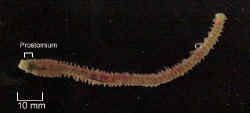 
Whole segment |
|
|
|
 Prostomium
Prostomium
2 pair of eyes present, most species have 2 antennae, but
one genus has 1 antenna only. Palps are biarticulated. 2 or 4 pairs of
tentacular cirri.
Eversible pharynx equipped with a pair of jaws, often with
accessory denticles or papillae.
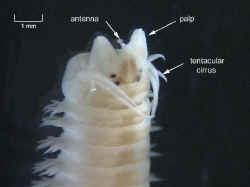 
Prostomium |
|
|
|
 Proboscis
Proboscis
The proboscis is divided into 2 rings. They are basal and oral rings.
The mouth opening at the oral ring equips with 2 toothed jaws.
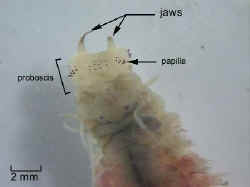  Proboscis
(Dorsal) Proboscis
(Dorsal)
  Proboscis
(Ventral) Proboscis
(Ventral)
|
|
|
|
 Parapodia and Setae
Parapodia and Setae
Parapodia are mostly biramous. The first two pairs,
however, are uniramous. Usually with complex flattened lobes and cirri.
Setae composite or simple, spinigerous
or falcigerous.
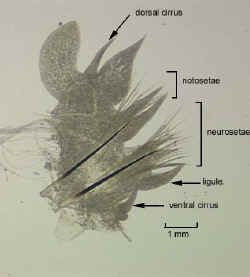  Parapodia biramous Parapodia biramous
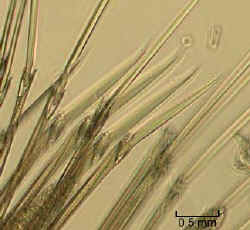 Compound and Compound and
spinigerous setae
|
|
